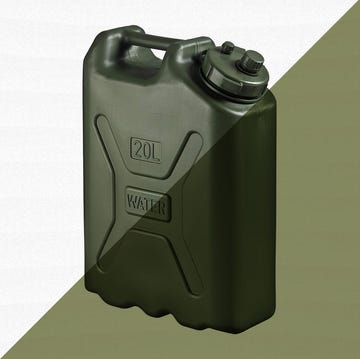PERPLEXING PLUMBING: TOILET CURES:
5:109 || ROYAL FLUSH:
You're spending a lot more time in the bathroom than you'd like because your toilet never seems to completely flush on the first try.
THE QUICK FIX
A poorly flushing standard toilet can be caused by a number of different problems. Lift the tank cover, and first check the chain that runs from the flapper cap to the flush handle; if it is too long, the handle won't lift the flapper cap sufficiently. Shorten the chain length by hooking into another link of the chain. Next, look at the water level in the tank--the amount of water affects how strong the flush will be. If the tank is not filling all the way (there should be a fill line on the inside of the tank), carefully bend the bulb of the float valve up a bit and see if the tank will fill. If it does not, check the toilet bowl rim holes (through which the water enters the bowl) with a small mirror, and if they are blocked, clean them with a small nail and acid-based porcelain cleaner. If none of the above does the trick, you may have a misadjusted or faulty fill valve that needs replacement.
5:110 || TANK GHOST:
The phantom flush--that mysterious phenomenon in which your toilet seems to flush itself--can be little jarring late at night, not to mention a waste of water.
THE QUICK FIX
The problem is usually caused by water slowly leaking from the cistern into the bowl because of a worn-out flapper valve. When the rubber flapper is compromised, it allows water to run out of the drain causing the toilet to constantly refill. Replacing it is easy--replacements are available at most hardware stores or home centers. Be sure to take the old one with you to find a correctly matching replacement.
5:111 || WHOOSH-FULL THINKING:
Low-flow toilets are a great way to save water, but sometimes yours simply doesn't flush strongly enough.
THE QUICK FIX
Ed Del Grande, an expert for the Kohler company and host of DIY Network's "Ed the Plumber," has dealt with many low-flow toilet issues. He says, "Always check the manufacturer's instructions to set the fill valve to make sure the water level in the tank is correct. For instance, most Kohler tanks have a proper fill line marked inside the tank. And a good rule of thumb, if there is no line, is to keep the water level a half inch below the top of the overflow tube inside the tank."
5:112 || WATER WORKS:
A constantly running toilet is testing your sanity.
THE QUICK FIX
The problem is most likely the flapper valve not sealing properly. First, make sure that nothing--such as a brick to raise the water level or a toilet-bowl cleaner dispenser--is blocking the valve from closing properly. This includes removing any mineral deposits around the seat beneath the valve. Also check that the pull chain attached to the valve is not too short and holding the valve slightly open.
5:113 || DRIP SERVICE:
A toilet tank is dripping, and you can't tell if the water is coming from harmless seasonal sweating or a bad seal.
THE QUICK FIX
Dump some food coloring into the tank and see if the color reaches the floor. If it does, check the tank for cracks and the piping for loose connections.
5:114 || RISING WATERS:
The toilet is about to overflow, and you know that your usual tactic of slamming the lid and crossing your fingers won't work.
THE QUICK FIX
As soon as the level in the bowl starts rising, reach into the tank and prop up the fill valve (the ball or cylinder that floats on top of the water). That will stop the flow to the toilet, thwarting an overflow. The plunger, however, still awaits.
5:115 || CHAIN REACTION:
You've just stepped into the shower when some family member flushes the toilet downstairs and makes you a victim of shower shock.
THE QUICK FIX
In a busy household it's inevitable that someone is going to use the toilet when someone else is using the shower. The problem is that a toilet flushing draws cold water away from the shower, making for a quick and unpleasant temperature change. The answer is to slow the rate of the toilet flush so that the effect is minimized. Find the water valve to the toilet tank and close it until it is about a quarter to one-half turn from completely shut off. The tank will fill slower, but if it's the difference between second-degree burns and mild temperature fluctuation, that doesn't really matter, now does it?
GO WITH THE PRO:
Although most homeowners are surprised by how easy plumbing problems can be to fix, certain situations require greater expertise. For the most part, any major problem is best handled by a licensed plumber. These include:
* Where a water leak is severe and the collecting water threatens to cause damage to the home's structure before it can drain away.
* Any situation in which raw sewage is backing up into the home.
* In the event that the water supply to your home is entirely cut off and you don't know how to restore it.
* When you can't find the source of a leak or the cause of a plumbing problem. When hiring a plumber, always check to make sure that he or she is licensed and has up-to-date insurance. Also be aware that your plumbing emergency may be covered by your homeowner's insurance-- always check with your insurance carrier.













